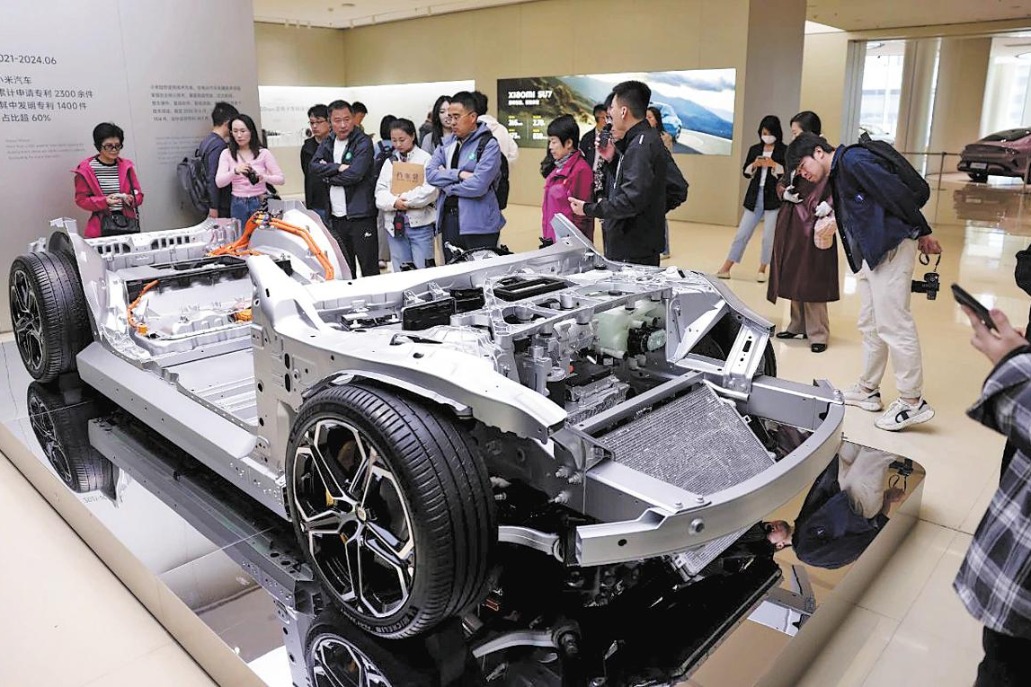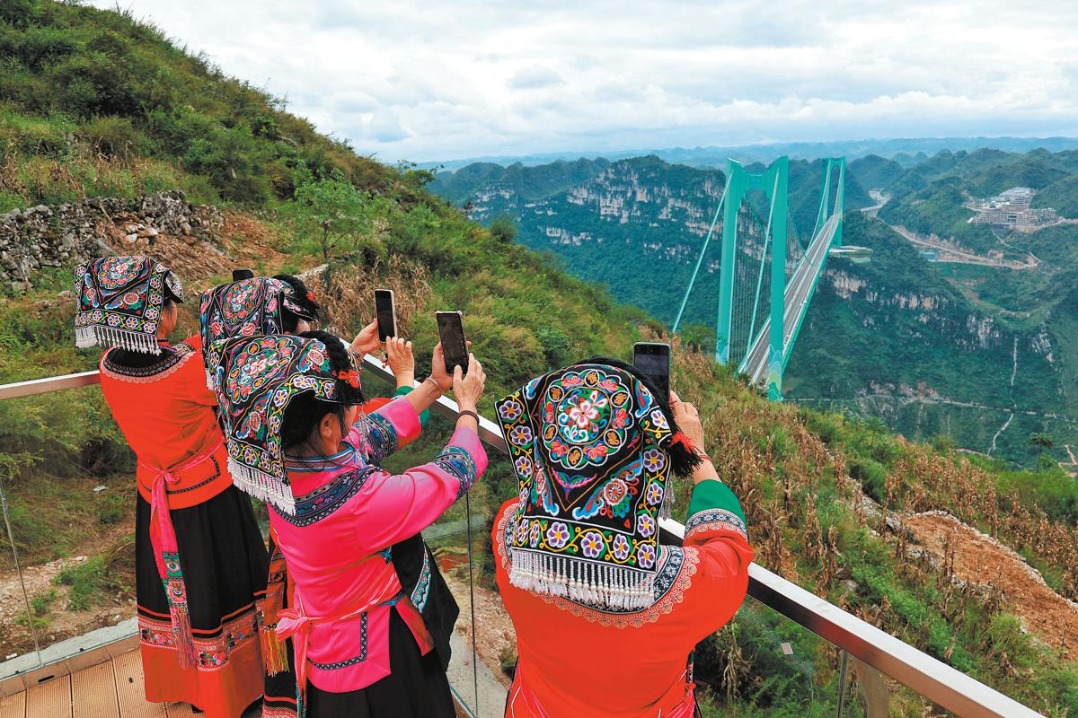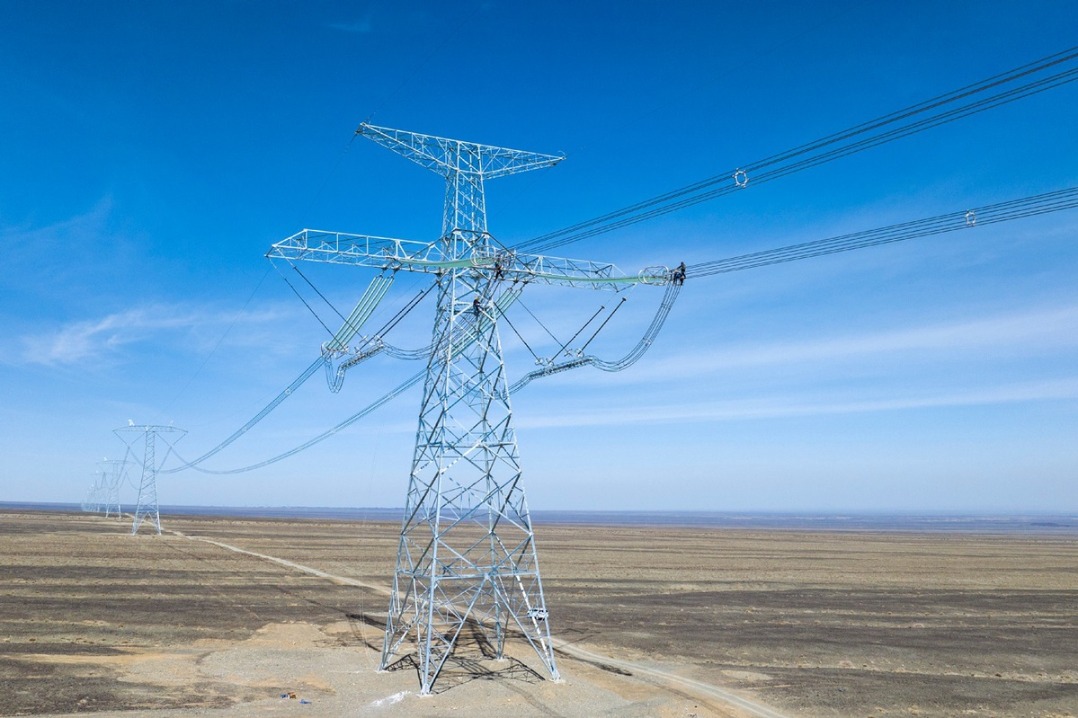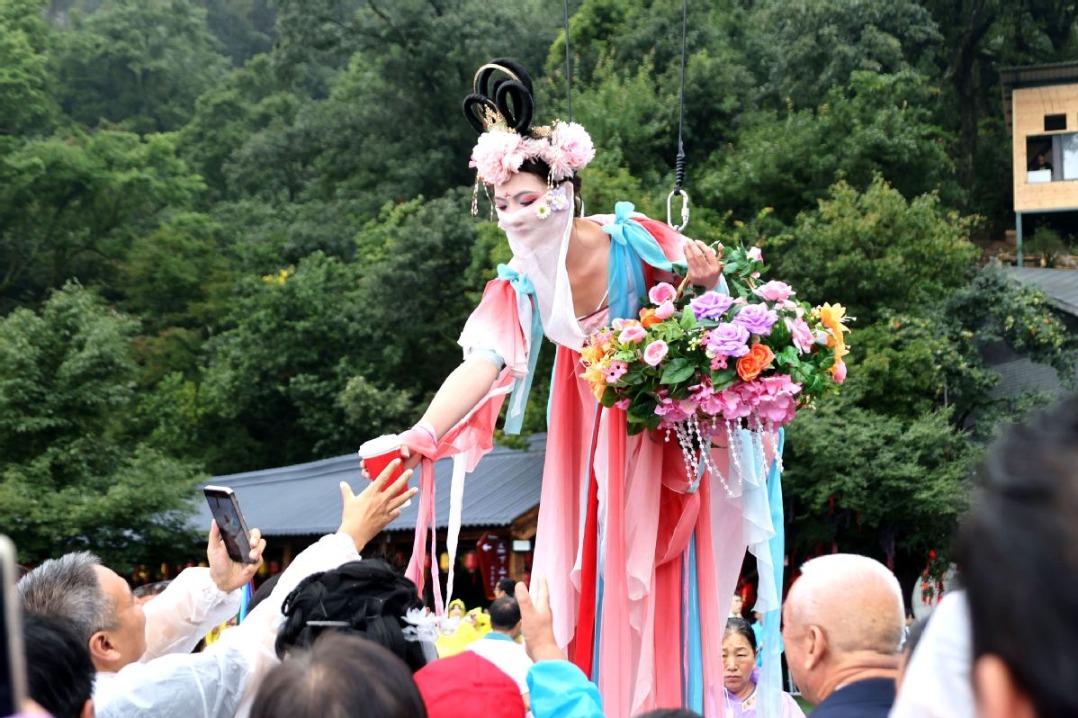CPC Guidelines for Governing Xinjiang in the New Era: Practice and Achievements
The State Council Information Office of the People's Republic of China September 2025

II. CPC's Governance of Xinjiang: Progress and Achievements
Since its founding, the CPC has always held deep concern for Xinjiang, and the future and wellbeing of the people of all ethnic groups living on this vast land. Under the leadership of the Party, the people of Xinjiang have traversed a remarkable path: from achieving emancipation and becoming their own masters, to embarking on the socialist road; from embracing reform and opening up and achieving moderate prosperity in all respects, to setting out on the new journey towards Chinese modernization. Together with the rest of the nation, they have witnessed the great transformation from standing up and growing prosperous to becoming strong. Over the past century and more, generations of Chinese Communists have continued to explore and advance theoretical, practical, and institutional innovations, deepening their understanding and grasp of the dynamics of governance in Xinjiang.
Active exploration during the New Democratic Revolution between 1919 and 1949. During this period, the CPC united the people of all ethnic groups in Xinjiang and led them in heroic and unrelenting struggle, bringing them emancipation and enabling them to be their own masters. The founding of the CPC in July 1921 was an epoch-making event in Chinese history. Ever since, the Party has remained a pillar on which the Chinese people, including those in Xinjiang, can rely. In its early years, the Party had given clear emphasis on Xinjiang, sending members to the region to spread Marxism, sow the seeds of revolution, enlighten the people, and raise their political awareness. During the whole nation's war of resistance against Japanese aggression (1931-1945), the CPC — holding high the banner of a national united front — led the people of Xinjiang in supporting the war effort: organizing donations, ensuring the safe transport of international aid to China, fortifying Xinjiang to support the war front from China's interior, and proactively engaging in movements to rescue the country from Japanese occupation. In August 1938, donations from the people of Xinjiang were used to purchase 10 fighter planes — named "Xinjiang" in their honor — to assist the front line.
Thanks to the CPC's persistent effort, people in Xinjiang developed an unprecedented sense of the Chinese nation as one community, and a large number of progressives devoted themselves to the revolutionary cause. Having secured a decisive victory in the War of Liberation (1946-1950), the CPC central leadership decided to peacefully liberate Xinjiang. The People's Liberation Army (PLA) marched triumphantly into the region, shattering the wild ambition of imperialist and separatist forces to dismember China and safeguarding the fundamental interests of the Chinese nation. This marked a major victory in the cause of national unification and a historic turning point in advancing unity and progress among the people of all ethnic groups in Xinjiang.
Comprehensive governance in the process of socialist revolution and construction between 1949 and 1978. During this period, the CPC united the people of all ethnic groups in Xinjiang and led them in bringing tremendous changes to a region with hard natural conditions, achieving a historic leap into socialist society. The founding of the People's Republic of China (PRC) on October 1, 1949 ushered in a new era: the Chinese people had stood up, and a new chapter for Xinjiang had begun. On December 17 the same year, the People's Government of Xinjiang Province was officially established. Under the Party's leadership, the people of Xinjiang consolidated the newly established people's democratic power, created a new, socialist form of ethnic relations, and abolished the feudal land system. Together, they prudently advanced comprehensive social reforms and completed the socialist transformation, establishing the socialist system in Xinjiang that enabled the region to stride forward with the rest of the country — marking the greatest and most profound change in Xinjiang's history.
On October 7, 1954, the Production and Construction Corps of the Xinjiang Military District of the PLA was formed. A total of 100,000 garrison troops began to open up large swaths of wastelands while guarding the border areas. On October 1, 1955, the Xinjiang Uygur Autonomous Region was formally established, marking a milestone in the region's development and a new success of the CPC's policies on ethnic affairs. In order to end poverty and catch up, the people of Xinjiang pursued self-reliance and worked with determination under the leadership of the CPC to strengthen their home region, supported by selfless assistance from people across the nation. Consequently, Xinjiang has basically built up its industrial system, improved its agricultural production conditions significantly, and achieved marked progress in education, science and technology, health care, transportation, and water conservancy. It has witnessed a historic transformation from barrenness and poverty to flourishing prosperity, secured pivotal achievements in socialist revolution and construction, and created a miracle that changed its future with the people's undaunted spirit.
Further progress in the process of reform, opening up, and socialist modernization. During this period, the CPC has united the people of all ethnic groups in Xinjiang and led them confidently onto the broad path of socialism with Chinese characteristics, aiming for greater heights. The convening of the Third Plenary Session of the 11th CPC Central Committee in December 1978 was a pivotal juncture of far-reaching significance in the history of the Party and the country. Xinjiang's vast land of 1.66 million square kilometers was awash with the strong tides of reform and opening up. In December 1981, the central government decided to restore the production and construction corps system, giving it the name the Xinjiang Production and Construction Corps (XPCC). As reforms rolled out, the CPC Central Committee — noting Xinjiang's great potential — decided to accelerate its modernization and promote common prosperity among all ethnic groups in the region. The Central Committee lent vigorous support to the region in transforming its advantage in superior resources into growth, guiding it to achieve a strategic shift in its focus. Comprehensive reforms were implemented in both rural and urban areas, while opening up was expanded by attracting external resources and strengthening internal coordination, bringing about new prospects on either side of the Tianshan Mountains.
After the Fourth Plenary Session of the 13th CPC Central Committee in 1989, the Party Central Committee emphasized that Xinjiang's development and stability was of overarching importance to the nation. For its development, prosperity, and lasting peace and security, the central leadership pooled resources nationwide in assistance to Xinjiang and saw that the socialist market economy was established and improved in the region. This enabled Xinjiang to seize the strategic opportunities presented by the large-scale development of China's west and pioneer a new phase of all-round reform and opening up.
Following the 16th CPC National Congress in 2002, the Central Committee reaffirmed its commitment to unswervingly advancing reform and opening up and socialist modernization in Xinjiang, maintaining social stability, and promoting ethnic unity. Guided by the major strategic plan of stabilizing and revitalizing Xinjiang, enriching the people, and safeguarding the border areas, the region has achieved sound and rapid economic and social development. In advancing the great cause of socialism with Chinese characteristics, Xinjiang has experienced a historic transformation. Its economy has been markedly strengthened by improving its once relatively backward productive forces, and its society has shifted from a closed and semi-closed outlook to one defined by openness. The people's living standards have also borne witness to profound transformation, evolving from bare subsistence to a basic level of moderate prosperity, and then ultimately to moderate prosperity in all respects. Xinjiang has caught up with the rest of the country in making great strides towards the goals of our time.
A new era for socialism with Chinese characteristics. The CPC has united the people of all ethnic groups in Xinjiang and led them in pressing forward with hard work, upholding fundamental principles and breaking new ground, creating new miraculous achievements. The 18th CPC National Congress held in November 2012 ushered Chinese socialism into a new era. While pursuing national rejuvenation within a wider context of global change on a scale unseen in a century, the Party Central Committee with Xi Jinping at its core has put its work related to Xinjiang high on the agenda of the Party and the country and continued to further its understanding and grasp of the dynamics of governance in the region. The Central Committee convened its second and third meetings on the work related to Xinjiang in 2014 and 2020, and in 2014, 2022 and 2023, General Secretary Xi traveled three times to Xinjiang on inspection tours, establishing the overall goal of social stability and lasting peace and security in the region, laying down the Party's guidelines for governing Xinjiang in the new era.
With the guidelines in place, Xinjiang has focused on forging a strong sense of the Chinese nation as one community, adhered to its strategic positioning in the country, and ensured both development and security. Solid steps have been taken to govern Xinjiang in accordance with the law, maintain stability through ethnic unity, strengthen cultural identity and bonds, bring greater prosperity to the region and its people, and develop Xinjiang from a long-term perspective. This has contributed to unprecedented economic and social development and significant improvement of people's wellbeing, and brought a greater sense of gain, happiness and security to the people.
Today's Xinjiang is experiencing the best period of development in its history. Over 26 million Xinjiang people of all ethnic groups are tightly knit like the roots of poplar trees and closely united like the seeds of a pomegranate. Confident and open-minded, they are marching forward on the new journey towards a modern socialist country in all respects and striving for the rejuvenation of the Chinese nation through hard work and perseverance.


































